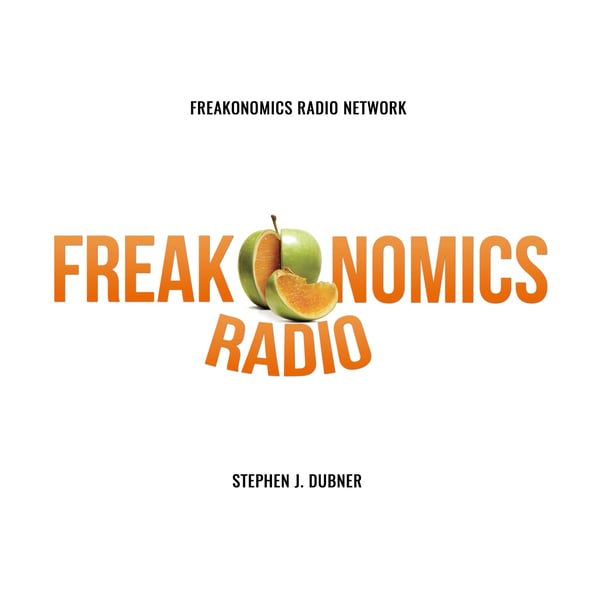189. How to Fix a Broken High Schooler, in Four Easy Steps
Freakonomics Radio
Freakonomics Radio + Stitcher
4.6 • 32K Ratings
🗓️ 4 December 2014
⏱️ 29 minutes
🧾️ Download transcript
Summary
Transcript
Click on a timestamp to play from that location
| 0:00.0 | My name is Carolyn Acker. I was the executive director of the Region Park Community Health Center. |
| 0:13.0 | Region Park in downtown Toronto is known for having one of Canada's oldest, biggest and worst housing projects. |
| 0:22.0 | So we're doing all this work. We're investing more and more dollars. When I went to Region Park Community Health Center 1992, the budget was about 2.8 million. |
| 0:32.0 | By about 1996, 97, the budget was close to 6 million. Instead of things improving, things were getting worse in terms of crime and murder, violence, this kind of thing. |
| 0:50.0 | We were very distressed over what was happening to our young people and we didn't really understand it. We were doing more and more, always investing more. |
| 1:01.0 | And we weren't seeing an improvement. There were about nine murders in Region Park in 2000, which was the year before we started Pathways to Education. |
| 1:14.0 | Pathways to Education was a voluntary program for high school kids in Region Park. It wasn't an education program exactly. It was more like life support. |
| 1:24.0 | The Pathways program, they say, has four pillars. Those are counseling, academic, social, and financial. |
| 1:32.0 | Let's fill up Oriopolis. He's an economist at the University of Toronto with a particular interest in education. Over the years, Oriopolis had heard about Pathways to Education that it was something of a miracle cure for low performing high schoolers. He wondered if that could possibly be true. |
| 1:50.0 | Pathways to Education had a pro bono study done in the mid-2000s by a consulting firm. The director that did the pro bono study was a member of the board of Pathways. |
| 2:05.0 | And came out with a report, I can feel your antenna as an empirical economist already going up. A nice report done by a consultant, this was Boston Consulting Group, I believe. |
| 2:15.0 | It was a Boston Consulting Group and who are good and reputable, but still a pro bono report commissioned by someone who's also sitting on the board of the nonprofit that's running the thing, you might be a little bit skeptical, yes? |
| 2:30.0 | Well, what was striking about the report was it suggested that before Pathways the dropout rate was 56%, and very soon after Pathways was introduced, the dropout rate was 10%. So you had a 46%age point fall in the dropout rate and the report was attributing it to the introduction of Pathways. |
| 2:49.0 | And this type of magnitude in effect is virtually unheard of in the education literature. It's like the holy grail of programs that try to improve outcomes, especially among disadvantaged households. |
| 3:03.0 | And if these results were true, we should try to figure out exactly how to replicate them across the country and in the US because they're so large it would solve a lot of our problems. |
| 3:17.0 | So on today's program, were the results true? If so, how did it happen? And most important? Where the rest of us sign up? |
| 3:29.0 | From WNYC, this is Freakinomics Radio, the podcast that explores the hidden side of everything. Here's your host, Stephen Dupner. |
| 3:49.0 | Carolyn Acker was running a community health center in Toronto Housing Project. |
| 4:01.0 | I was driven to break the cycle of poverty. How do you break the cycle of poverty? Well, education and income are the two most powerful determinants of health. |
| 4:13.0 | We talked about this in our last episode, the huge returns to education, especially if you've got a good teacher. |
| 4:19.0 | We know a good teacher can increase the lifetime income of a classroom by over $250,000. |
| 4:26.0 | We also talked about how US teachers on average aren't as good as we might like, and that it's not necessarily their fault. |
... |
Please login to see the full transcript.
Disclaimer: The podcast and artwork embedded on this page are from Freakonomics Radio + Stitcher, and are the property of its owner and not affiliated with or endorsed by Tapesearch.
Generated transcripts are the property of Freakonomics Radio + Stitcher and are distributed freely under the Fair Use doctrine. Transcripts generated by Tapesearch are not guaranteed to be accurate.
Copyright © Tapesearch 2025.

